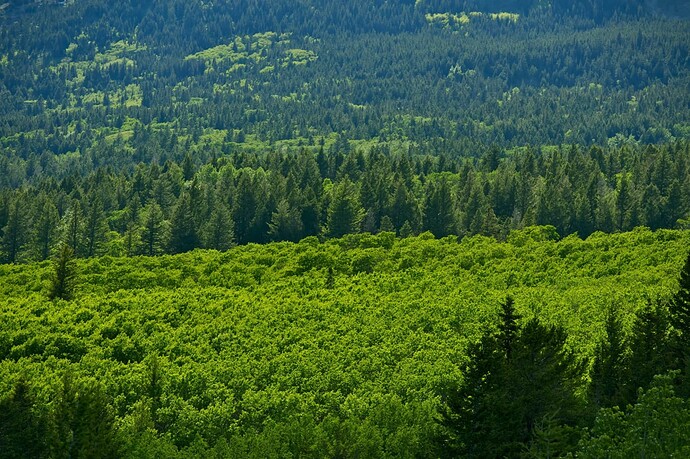The recent partnership between Domain Timber Advisors and Fulcrum Asset Management signals a new wave of pension fund investments in U.S. forestland, driven by growing demand for sustainable assets and carbon offsets.
Pension funds and endowments began exploring forestland as an alternative investment class in the 1980s, seeking long-term stability, diversification, and inflation protection. Early adopters like Harvard University Endowment and TIAA recognized that forestland offered consistent returns uncorrelated with traditional financial markets. Today, forestland is regaining attention not only for its financial performance but also for its role in carbon sequestration and biodiversity conservation, making it a top ESG-related asset.
Forestland’s appeal lies in its insulation from economic cycles and potential to hedge against inflation. Scott Reaves, Chief Operating Officer of Domain Timber Advisors, explains: “One attractive element of forestland is that trees grow regardless of economic policy, making forestland investments a potential hedge against inflation.” The U.S. timber market has demonstrated remarkable stability. During the pandemic in 2021, U.S. lumber prices surged to over $1,500 per thousand board feet (MBF), yet timber prices in the U.S. South remained steady, increasing only slightly to $25–$28 per ton for pine sawlog. Even when lumber prices dropped to around $500–$600 per MBF in 2023, stumpage prices stayed stable, reflecting the resilience of timber markets in the region.
According to TimberMart-South, pine sawtimber prices have hovered around $25 per ton for over a decade. While forestland is largely independent of stock market volatility, it correlates with the housing and lumber markets over the long term. The housing shortage following the 2008 financial crisis, which has left the U.S. short by 4.5 million homes as of 2024, continues to sustain demand for timber. This ongoing gap has supported stable demand and gradual growth of timber prices in the U.S. South, where pine sawlog prices have modestly increased from $25.23 per ton in 2014 to $25.76 per ton in 2024.
The combination of housing shortages, sustainable forest management, and an abundant supply of well-managed forestland has made U.S. forestland highly attractive for investors. “We focus on sourcing forestland properties, often from the lower middle market, with a good portion coming from smaller properties owned by private families, and uplifting them into more sustainably managed assets,” says Scott Reaves. He emphasizes that forestland investments can generate economic returns while contributing to sustainability goals such as the sustainable production of wood products, biodiversity conservation, and rural economic support.
The increasing demand for ESG investments and carbon offsets has amplified interest in forestland. Forests play a crucial role in carbon sequestration, making them attractive assets for investors seeking both financial returns and environmental benefits. Scott Reaves underscores the importance of forestry investments in meeting ESG goals: “Forestland investments align well with ESG objectives. We’ve seen increased demand, especially around improvements in environmental outcomes like biodiversity enhancement and carbon sequestration.”
This trend extends to European pension funds as well. Last year, Nest and Cushon, UK pension schemes with combined assets over £26 billion, jointly sought asset management partners to develop forestry investment strategies to combat climate change. Believing that investing in forestry projects will offset emissions and yield attractive returns as carbon prices rise, they allocated £600 million for a joint investment mandate. Both schemes intended to avoid forestry projects where logging contributes to deforestation, focusing instead on sustainably managed forests. While tropical forests like the Amazon offer high carbon sequestration potential, they also pose risks due to local politics, fires, and climate change effects.
The U.S. South remains a prime region for forestland investments, holding 58% of the 766 million acres of U.S. forestland. The region’s abundant timber supply and robust management practices have kept prices stable, making it an attractive location for long-term investment. Joe Sanderson, Managing Director of Domain Timber Advisors, adds: “Every region has its unique value proposition, but U.S. forestland holds up well both economically and from an ESG perspective.” The U.S. is known for its high standards of forest management, further boosting the appeal of forestland as an investment. Many properties in the U.S. are managed under Forest Stewardship Council (FSC) certification, which ensures sustainable practices that align with ESG goals. Joe Sanderson notes that their strategy focuses on both financial and environmental outcomes: “We’re focused on enhancing biodiversity, such as longleaf pine restoration and conserving high conservation value forests. FSC certification is a key benchmark for these properties.”
As carbon credits gain value and interest in sustainability grows, forestland investments are poised to rise. European pensions are expanding their forestry portfolios, and U.S. forestland is well-positioned to benefit from this trend. With its combination of financial stability and environmental impact, forestland offers a compelling opportunity for institutions seeking to meet both investment and ESG objectives.
Source: Lesprom
